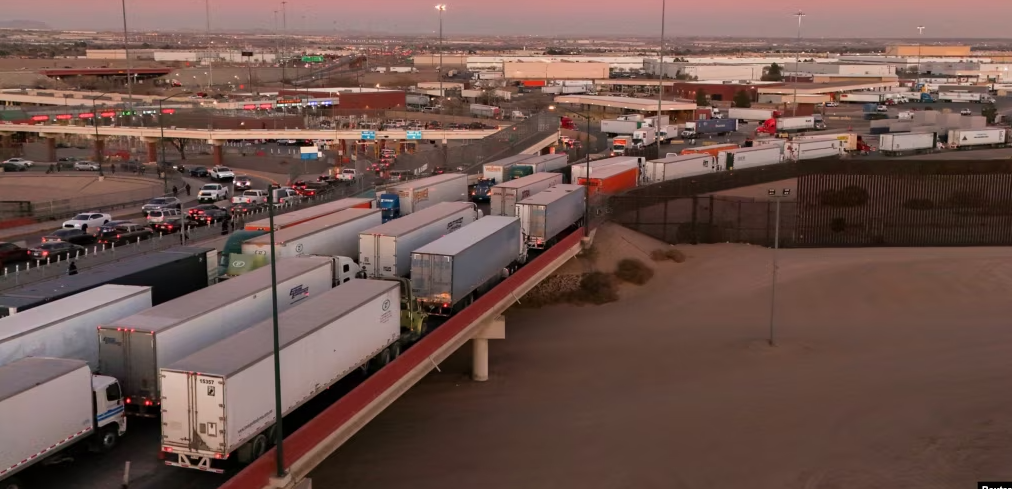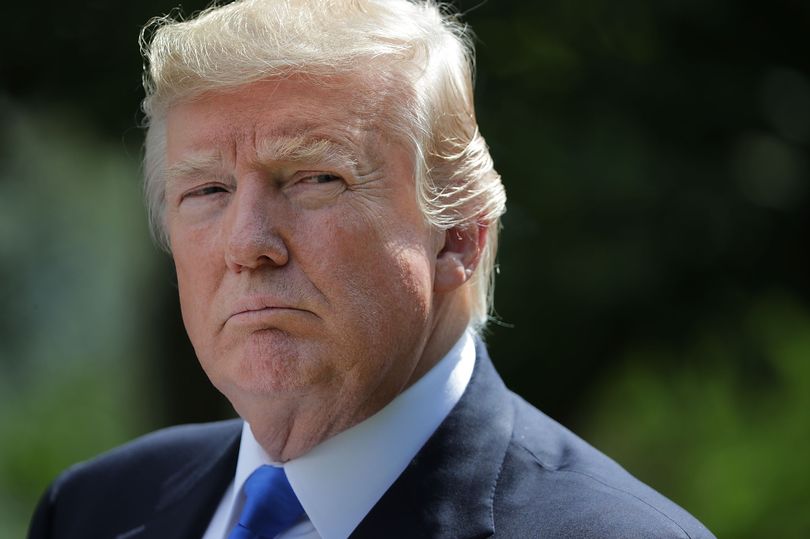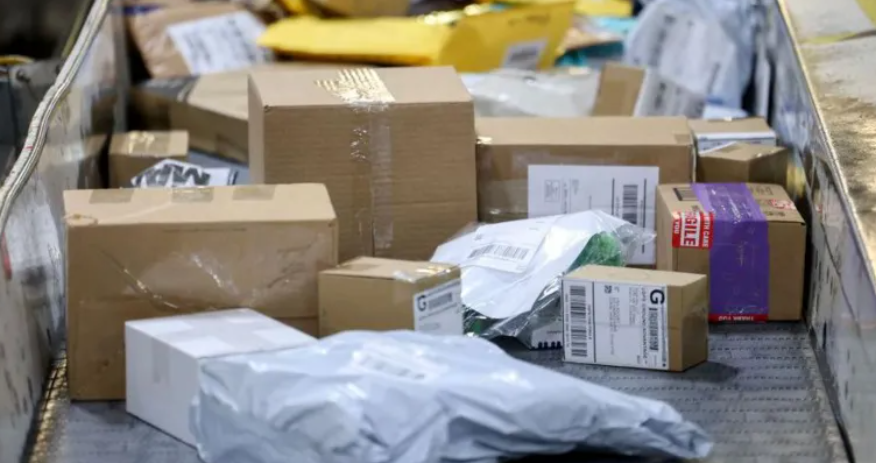
U.S. President Donald Trump signed an executive order Saturday that places 25% tariffs on imports from Canada and Mexico and 10% tariffs on goods from China starting Tuesday, the White House said.
“Both Canada and Mexico have allowed an unprecedented invasion of illegal fentanyl that is killing American citizens, and also illegal immigrants into our country,” White House press secretary Karoline Leavitt said during her briefing Friday.
Trump, who is spending the weekend at his Mar-a-Lago estate in Florida, was not scheduled to speak to reporters.
While Canadian goods will face a 25% tariff, Trump said he would tariff Canadian crude oil imports at 10%. Mexico’s energy imports are included in its 25% tariffs. For Canada alone, Trump canceled the “de minimis” tariff exemption for shipments worth less than $800.
China’s 10% would be on top of various tariffs on its goods.
Under the order, there is no process to seek an exception, but there is one to escalate the tariff rates if the countries retaliate.
Canada and Mexico both responded later Saturday.
Mexican President Claudia Sheinbaum ordered retaliatory tariffs in response to the U.S. move, saying in a post on X that her government would prefer dialogue but had been forced to respond.
“I’ve instructed my economy minister to implement the plan B we’ve been working on, which includes tariff and nontariff measures in defense of Mexico’s interests,” she wrote.
She also rejected “the White House’s slander that the Mexican government has alliances with criminal organizations, as well as any intention of meddling in our territory.”
“If the United States government and its agencies wanted to address the serious fentanyl consumption in their country, they could fight the sale of drugs on the streets of their major cities, which they don’t do, and the laundering of money that this illegal activity generates that has done so much harm to its population,” she wrote.
Canadian Prime Minister Justin Trudeau said Saturday that Canada would retaliate against the U.S. action with 25% tariffs on U.S. goods, saying that the tariffs would apply to $155 billion in U.S. goods, with those on $30 billion to go into effect Tuesday those on the other $125 billion in 21 days.
He also said Canada is looking at nontariff measures, possibly relating to critical minerals, energy and other partnerships.
‘Negative impact’ predicted
China, Mexico and Canada account for more than one-third of the goods and services imported into or bought from the United States.
Some economists warn that the tariffs could backfire.
Imports from Mexico and Canada make up around 3% of U.S. gross domestic product, while exports make up around 2.5% of U.S. GDP, Brad Setser, a senior fellow at the Council on Foreign Relations, said.
A 25% tariff on Mexico and Canada amounts to a “tax hike on imports from those countries” and will “have an immediate and negative impact on the U.S. economy,” he told VOA. “It’s a strategy for shrinking the U.S. economy.”
Trump has long threatened to impose tariffs to pressure countries to help his administration stop illegal immigration and the smuggling of chemicals used for fentanyl. He has pledged to use tariffs to boost domestic manufacturing and has praised their use as an effective economic policy.
Trump believes that “tariffs are a great source of leverage,” and that he will “convince Canada and Mexico to make big concessions under the threat of tariffs,” Setser said. “But these measures are going to be pretty costly to the U.S.”
Trump acknowledged that the tariffs might cause a “short-term disruption” for consumers but said they would lead to a long-term benefit for U.S. manufacturing.
“Tariffs don’t cause inflation. Tariffs cause success,” he added.
Trump had vowed Friday to impose sweeping tariffs on semiconductors, pharmaceuticals, steel and aluminum, and oil and gas.
“All forms of medicine and pharmaceuticals,” Trump said. “And we’ll be doing, very importantly, steel, and we’ll also be doing chips and things associated with chips.”
Trump warned he would “absolutely” place tariffs on goods from the European Union.
“They’re treating us so badly,” he said.
In imposing the tariffs, he invoked the International Emergency Economic Powers Act. The White House said Saturday the act was needed because of “the extraordinary threat posed by illegal aliens and drugs, including deadly fentanyl, constitutes a national emergency.”
Free trade agreement
During his first administration, in 2018, Trump negotiated and signed the United States-Mexico-Canada free trade agreement, in part to narrow the large U.S. trade deficit — the gap between what it exports and what it imports — with its neighbors. He once called the deal “the fairest, most balanced and beneficial trade agreement we have ever signed into law.”
However, the U.S. trade deficit in goods with Mexico has widened from $106 billion in 2019 to $161 billion in 2023, according to government data. The trade gap in goods with Canada has also increased, from $31 billion in 2019 to $72 billion in 2023.
“He’s now acting like his deal caused a disaster needing an emergency fix,” said Derek Scissors, a senior fellow at the American Enterprise Institute.
There is no justification for high tariffs on Canada, a market economy that is not in the top five of U.S. trade deficits, Scissors said. “Fentanyl shipments across the Canadian border are tiny,” he added.
Fentanyl and illegal migration are justifications for border restrictions on Mexico, Scissors said. However, tariffs “don’t stop illegal immigration and probably encourage it by threatening jobs in Mexico.”
Source: voanews.com




